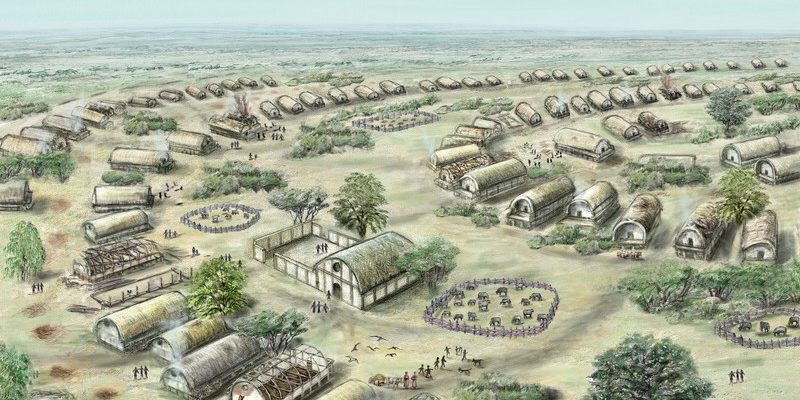More than 6,000 years ago, i.e. around 1,500 years before the ancient Egyptian pyramid of Cheops was built, large settlements arose north of the Black Sea: They are the oldest known cities in Europe and the largest known cities in the world at the time. These settlements of the Trypillia culture on the territory of today’s Ukraine and Moldova were up to 320 hectares in size – that is, four and a half football pitches. They provided living space for up to 15,000 people. The population lived through a sophisticated system of growing peas in particular, as well as grain and keeping livestock.
“The supply of the residents of the mega-settlements was based on extremely sophisticated food and pasture management,” says the first author and paleo-ecologist Frank Schlütz from the University of Kiel. Accordingly, a large part of the cattle and sheep were kept in fenced pastures. “The animal dung produced there was used by people to intensively fertilize the peas in particular.”
Accordingly, peas and grains were the mainstays of the diet at the time, while meat only contributed around ten percent. The pea straw produced during plant cultivation was probably used to feed the herds in the pastures. This closely interlinked economic system has ensured a healthy diet for the people of the mega-settlements, writes Schlütz’s team in the specialist journal PNAS.
The Trypillia societies, called Tripolje in Russian, emerged about 6,800 years ago in the fertile forest steppe between the Danube tributary Prut on what is now the Romanian-Moldovan border and the Dnieper River. The size of settlements reached its maximum more than 6,000 years ago. The large settlements probably dissolved again after a few centuries as a result of social tensions; 5000 years ago the Trypillia societies had disappeared. By far the largest cities were in the eastern settlement area, south of today’s Kiev.
People gathered in large halls and lived quite egalitarian lives
The buildings of these settlements were planned in a ring around a central square and, in addition to residential buildings, contained huge assembly halls, which were among the largest buildings in Europe at the time, as well as smaller assembly buildings in the individual districts. Based on the architecture, the team assumes a society that was still structured in a fairly egalitarian way in the heyday of mega-settlements.
To understand the economy of the time, the team analyzed nitrogen and carbon isotopes in soil, plant remains, and animal and human bones from settlements of various sizes, including the approximately 200-hectare city of Maidanetske, the most populous city with up to 15,000 residents applies to that time. As the study showed, peas provided 54 percent of the protein and grains provided a further 28 percent of the protein. Together, both provided around 92 percent of the calories. Animal products therefore provide less than ten percent of the calorie requirement. However, they served as suppliers of important nutrients such as vitamin B12 and were probably eaten at communal celebrations.
“The main focus of intensive livestock farming was the removal of manure to enable the harvest of protein-rich legumes on the already fertile and additionally fertilized soils,” the group writes. “In the mega-settlements, most cattle were probably kept in fences to concentrate the dung in a small area for easier collection and to protect the adjacent plant beds from the animals.” Such a sophisticated and extensive economy was probably nowhere else in the world at that time.
However, the analysis of the cities also shows that the planned economy did not last very long. The disappearance of smaller meeting houses and an increasing proportion of residential buildings of different sizes indicate increasing social inequality. “As we know from previous studies, increasing social inequality led to social tensions,” says co-author Robert Hofmann. “People turned their backs on large settlements and decided to live in smaller settlements again.”

